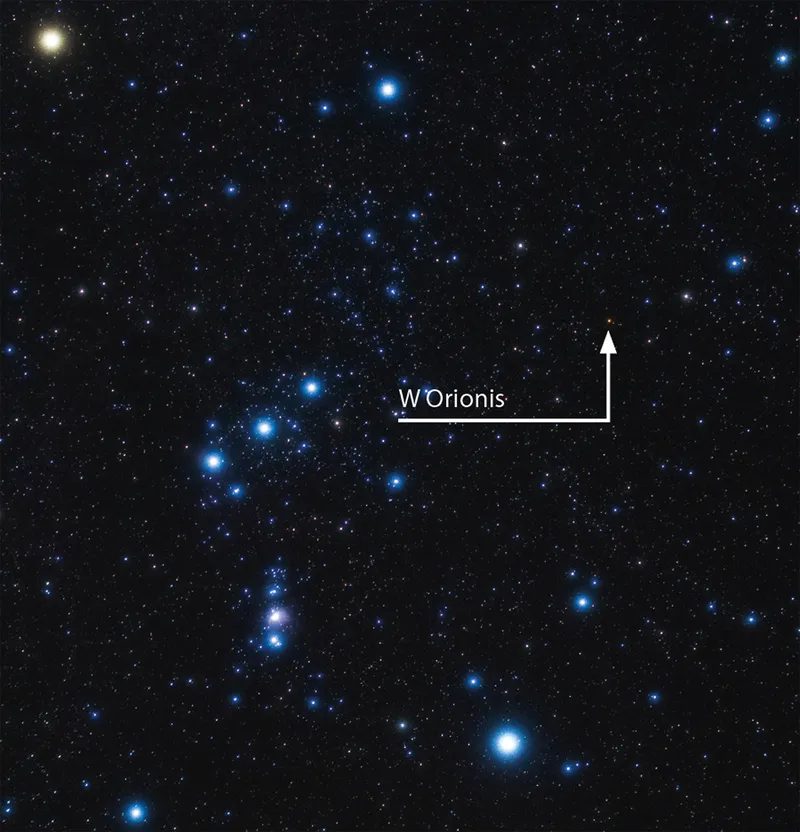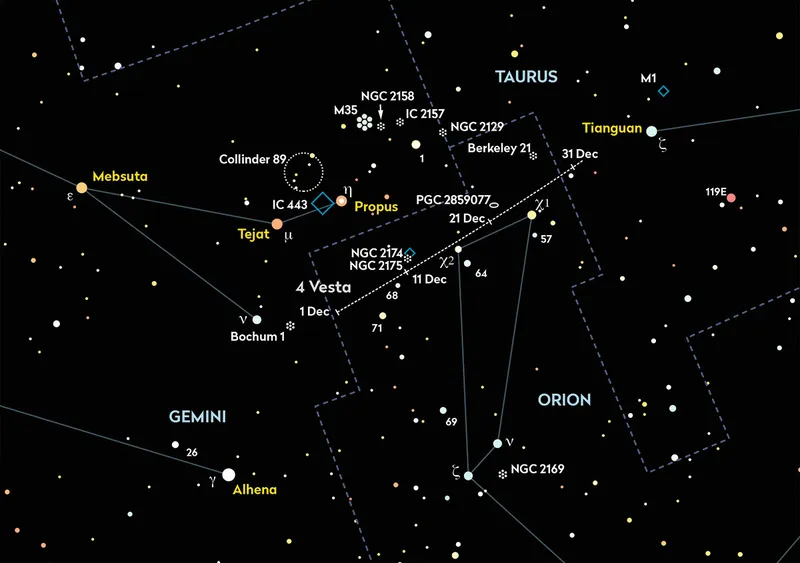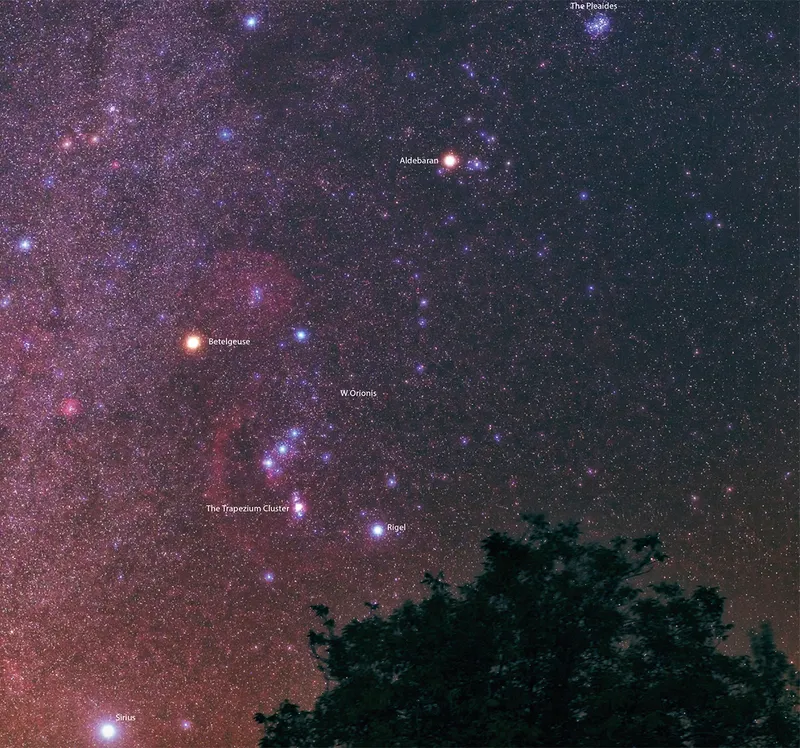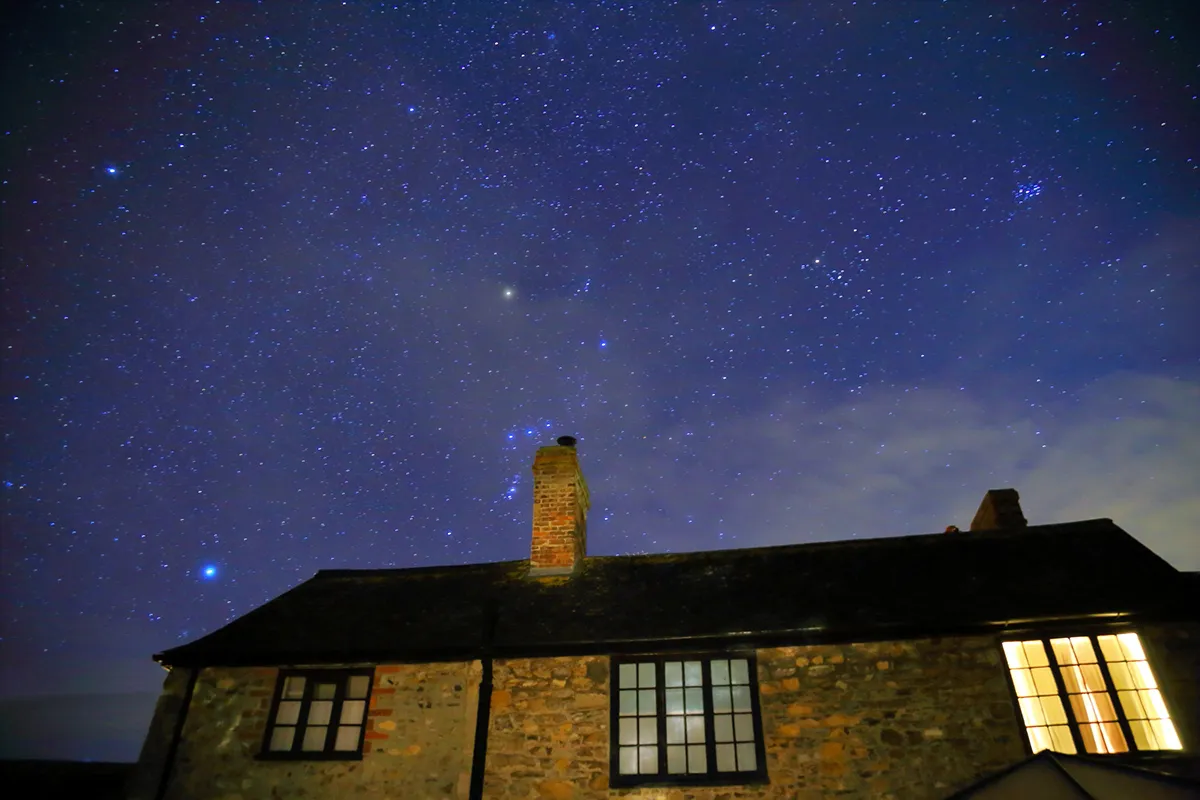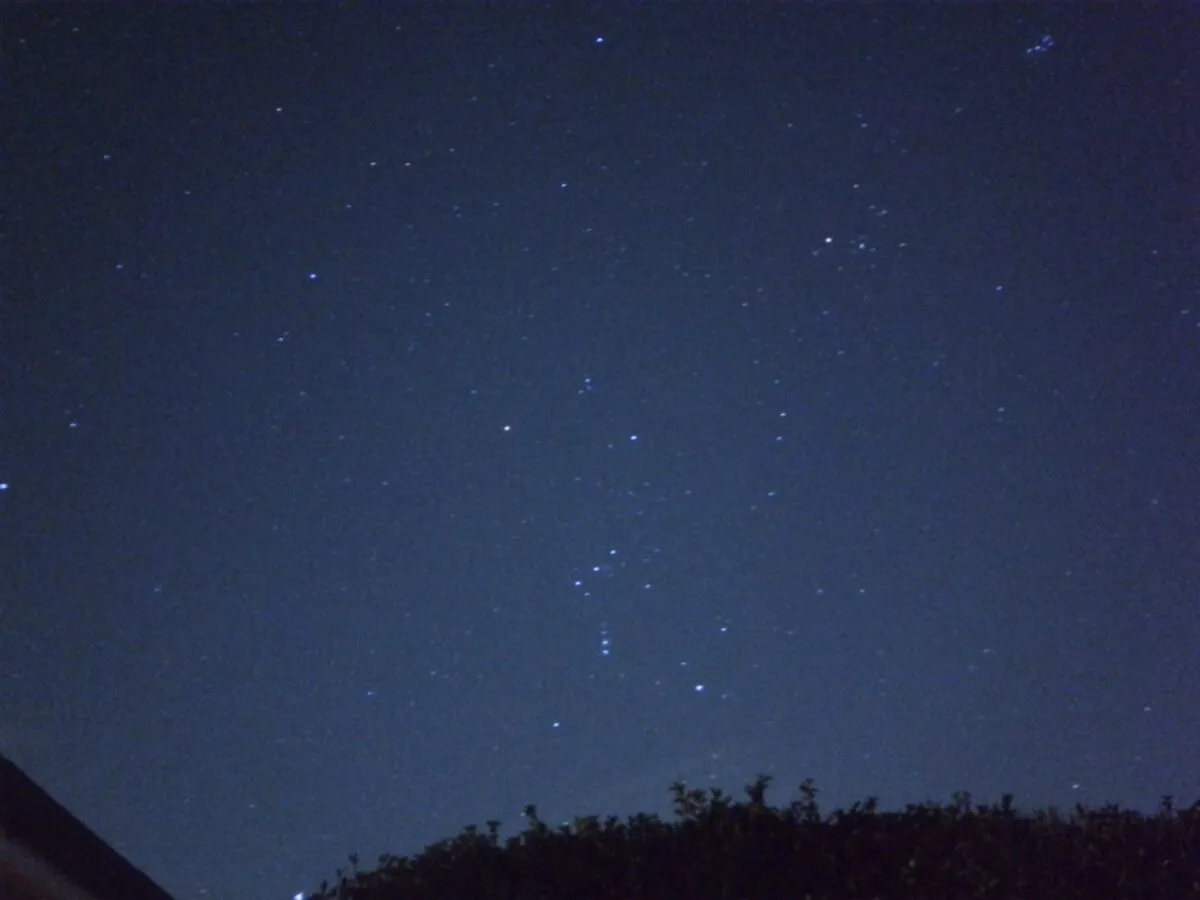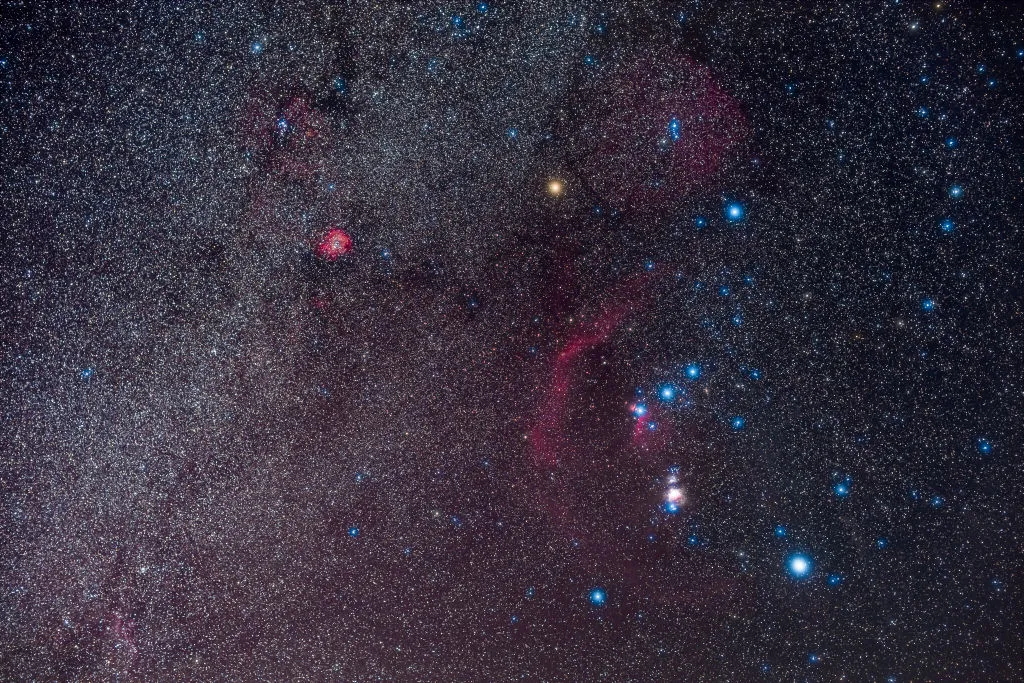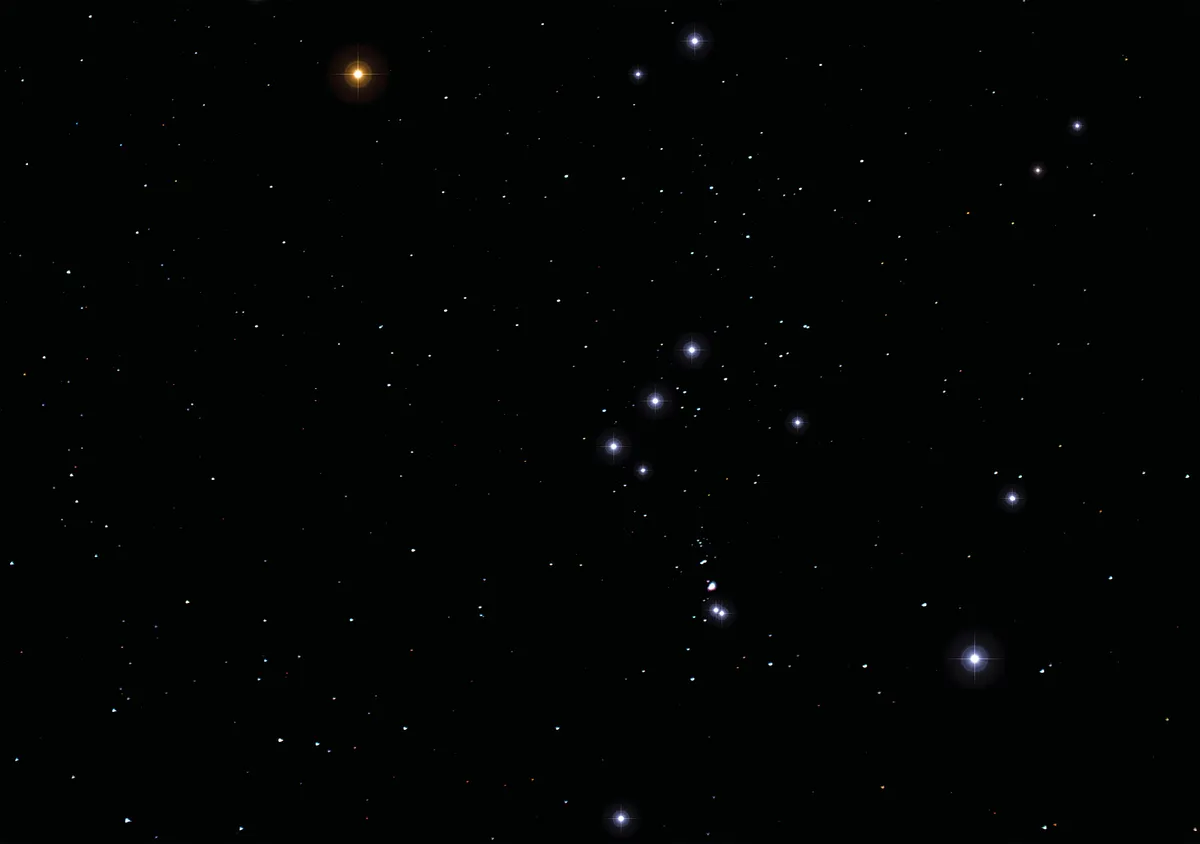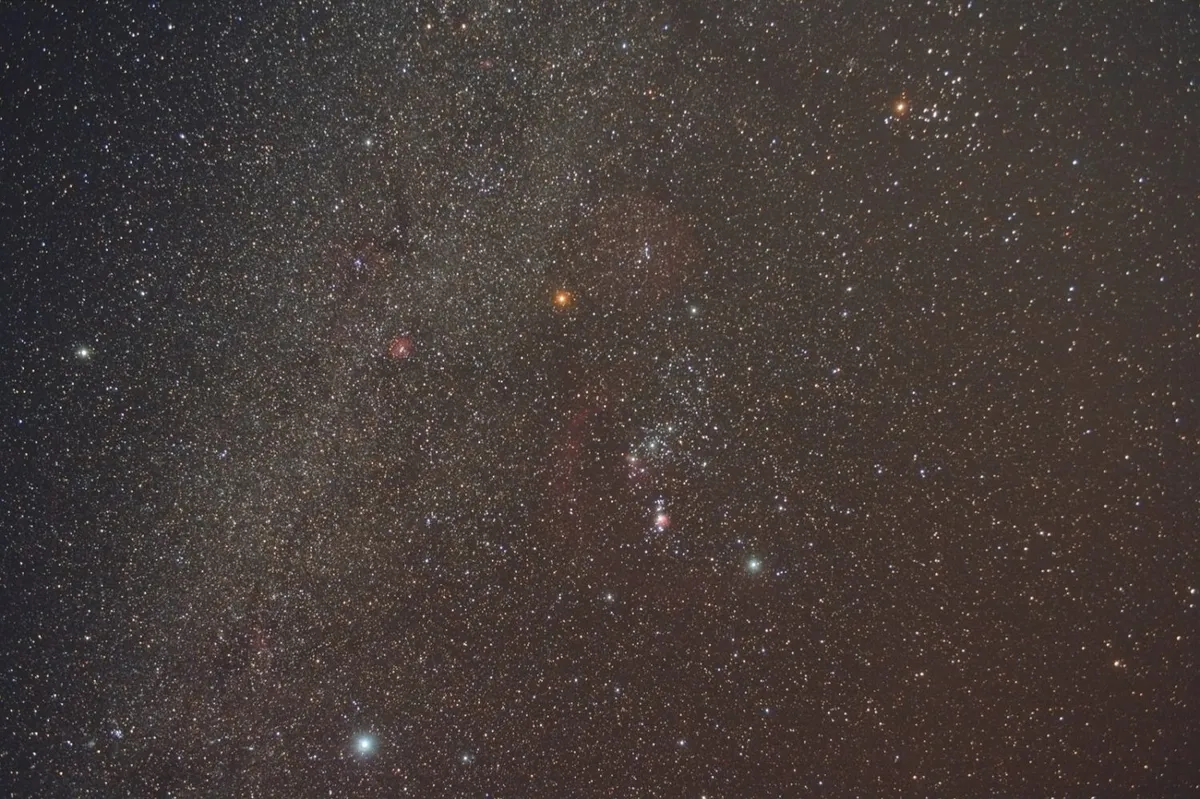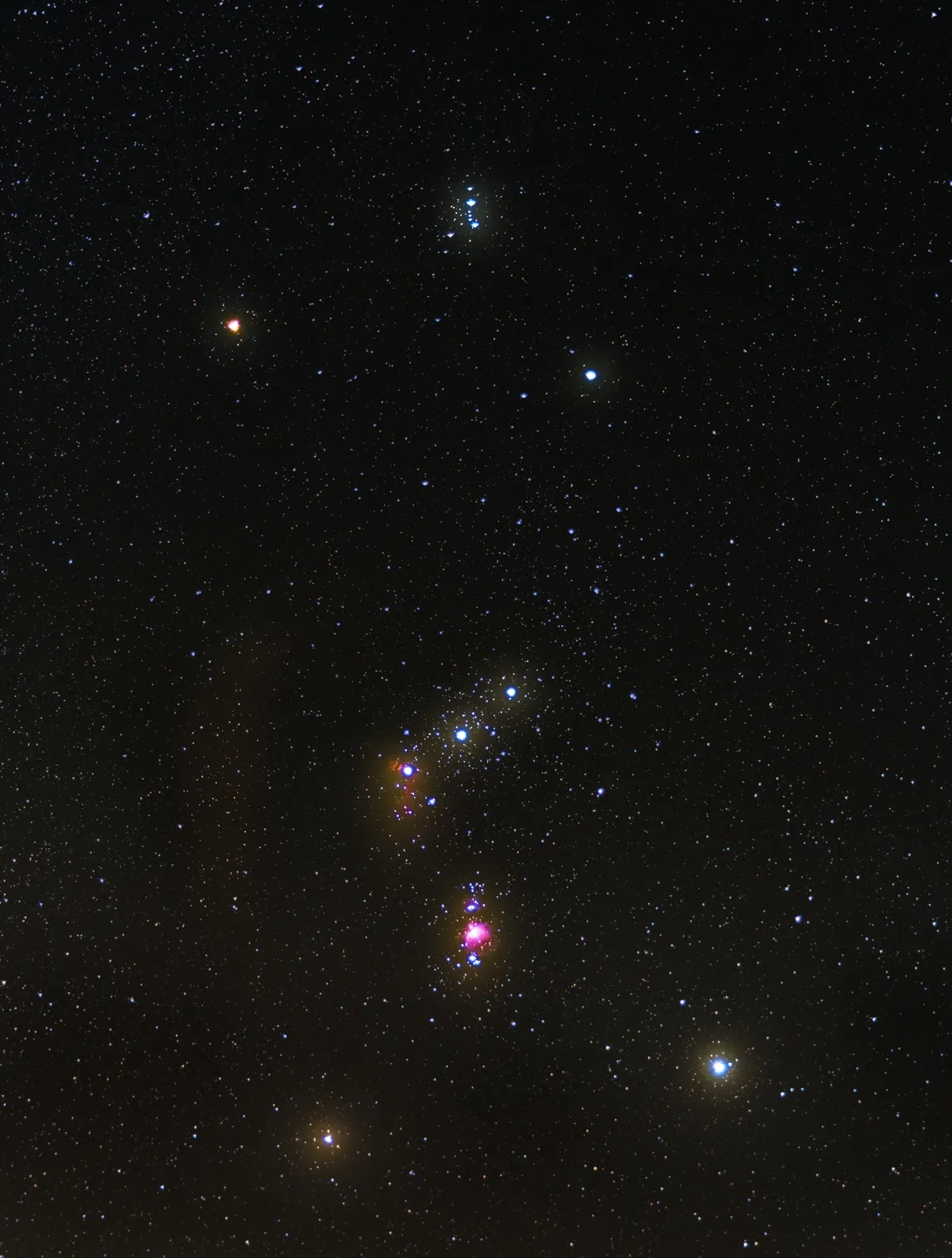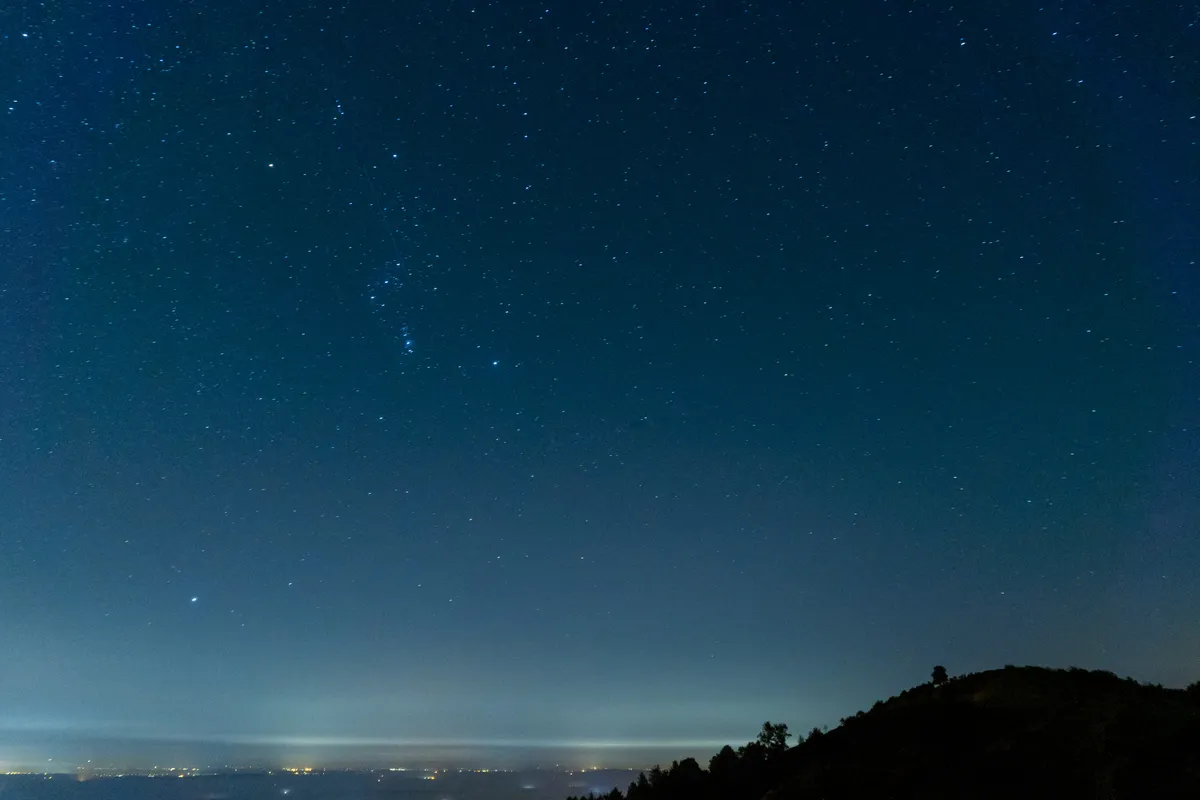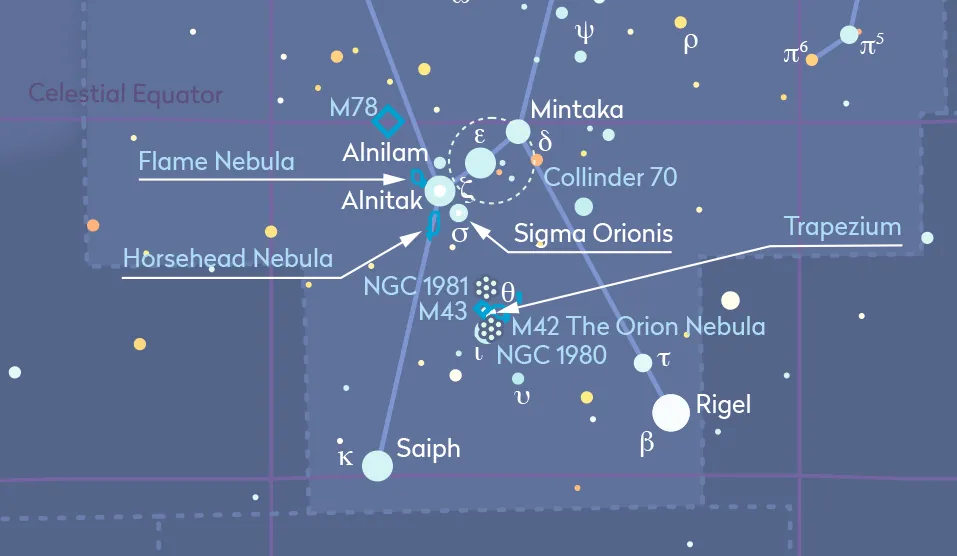There are few constellations that grab the attention quite like that icon of the winter heavens, Orion.
The glittering bright stars, the instantly recognisable ‘belt’ and the many glowing nebulae scattered within the Hunter’s boundaries all make Orion a wonder to behold on a frosty, dark night.
But the constellation is also a rich hunting ground for observers and astrophotographers seeking deep-sky targets as well as winter stars.
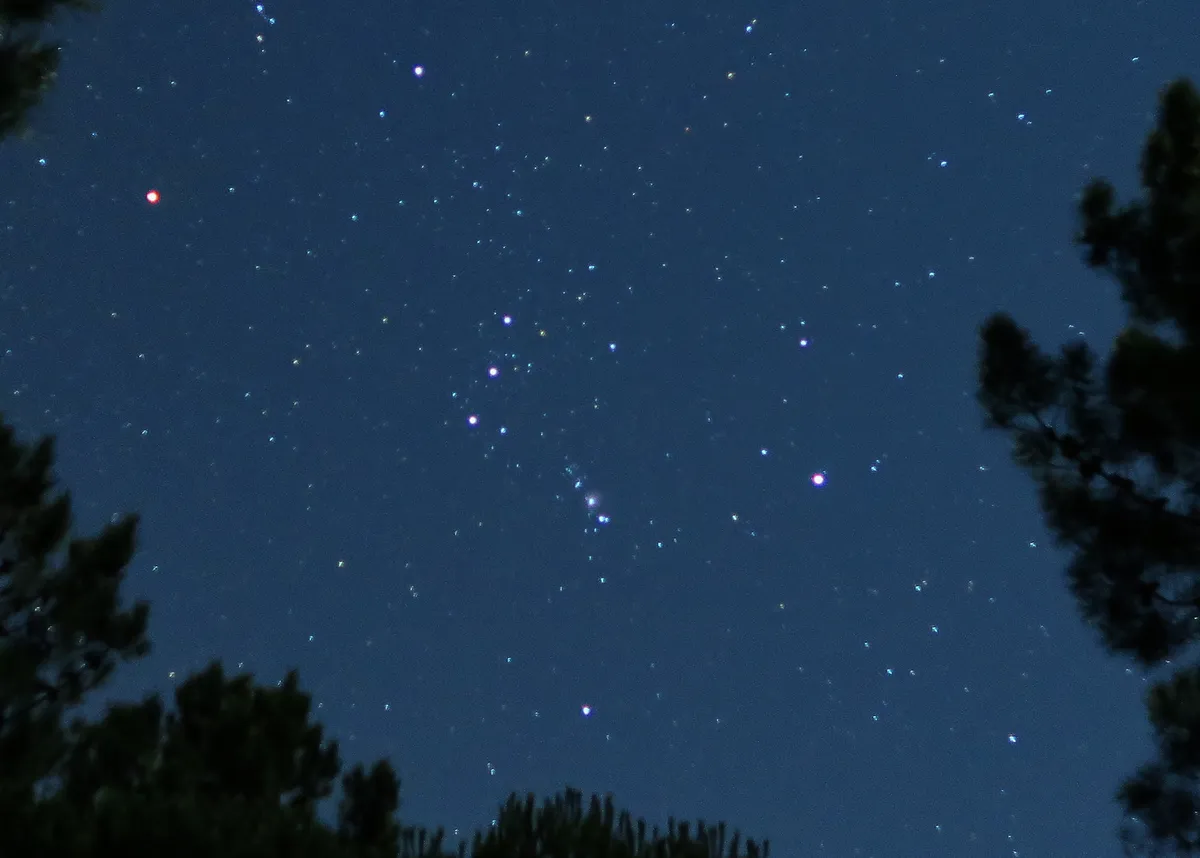
Orion holds something for everyone, whether you enjoy the naked-eye splendour of its stars or want to tour it with a pair of binoculars.
Or you could peer deeper with a modest telescope or delve into Orion's deepest and faintest targets with 10- to 14-inch systems.
It is easy to enjoy the view of the Orion Nebula alone, but a host of astronomical treasures awaits those willing to look a little closer.
Below we reveal some of Orion’s most striking features and the equipment needed to see them.
Orion's Belt
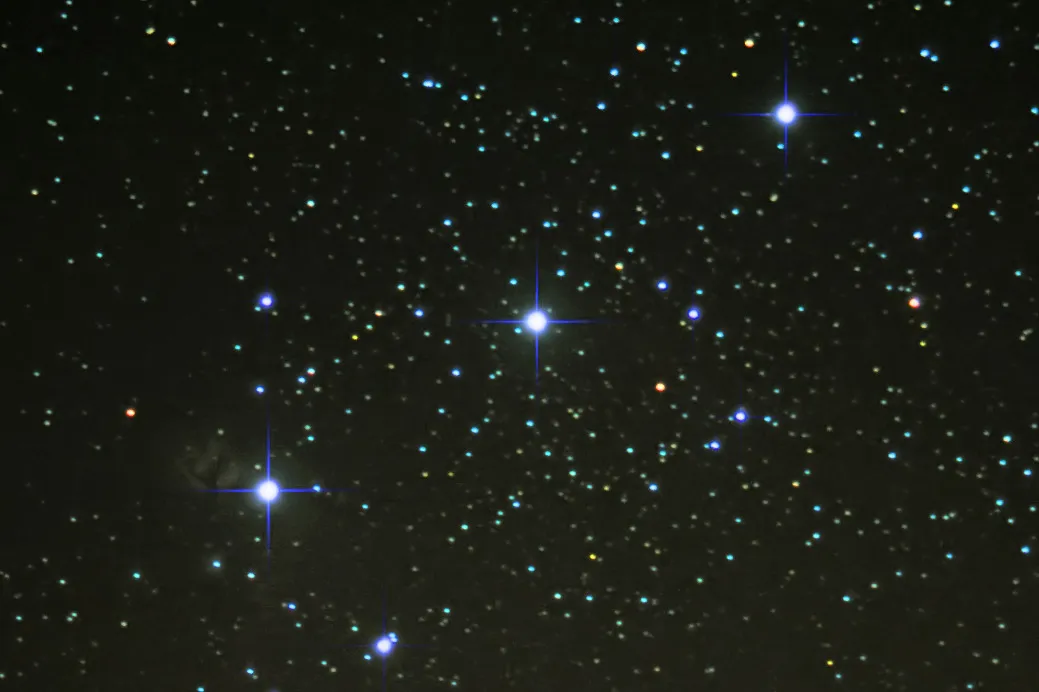
One part of Orion is particularly recognisable. It comes in the form of just three stars, and is known as Orion’s Belt.
same colour, quite close together, are virtually the same brightness and form a fairly straight line.
The stars of Orion's Belt, from east to west, are known by their Arabic names of Alnitak (‘belt’), Alnilam (‘string of pearls’), and Mintaka (‘girdle’).
If you’ve ever seen any of the wonderful images of a gas cloud in space known as the Horsehead Nebula, then it sits in this part of the sky, just below the Belt star Alnitak – although you would need a big telescope to see it.
Mintaka
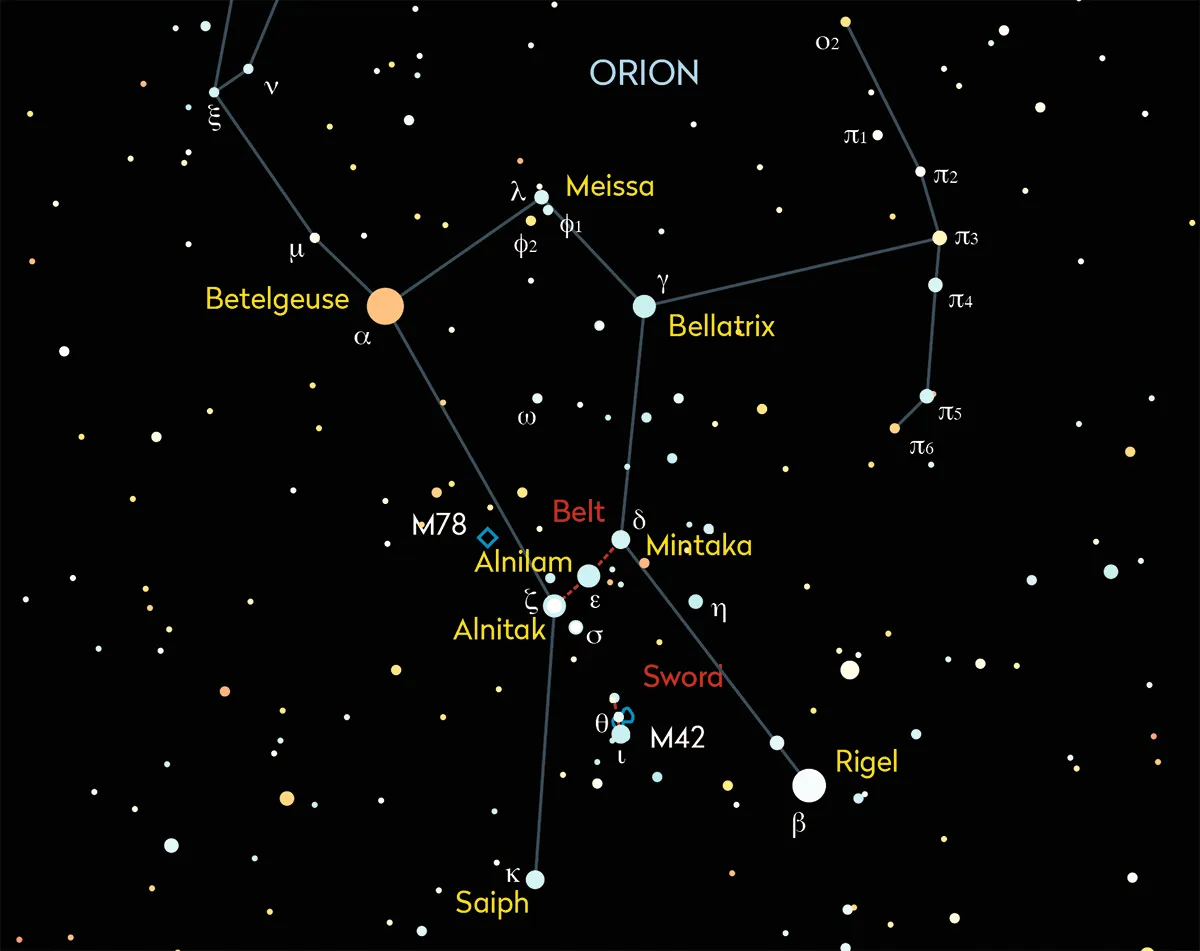
Mintaka (Delta (δ) Orionis) is easy to find. Shining at mag. 2.3, it marks the northwest end of Orion’s Belt, the star’s name deriving from the Arabic for ‘belt’.
Sitting 17 arcminutes south of the celestial equator, Mintaka hides a great deal of complexity.
Observations made by Johannes Franz Hartmann in 1904, using photographs taken at the Potsdam Observatory in Germany, showed Mintaka was a spectroscopic binary star.
A spectroscopic binary shows periodic movement within its component star’s spectral lines.
Hartmann noticed the Calcium-K line at 393.34 nanometres didn’t show the same periodicity as the Mintakan system and from this he deduced there must be a calcium cloud between us and the star.
This was the first detection of what’s known as the interstellar medium.

Mintaka is a complex multiple star, comprising a mag. 6.8 star 52 arcseconds to the north of the primary and a far fainter 14th magnitude star in between.
The mag. 2.3 primary is designated A, the 14th magnitude star is B and the mag. 6.8 star C.
Delta (δ) Orionis A is the spectroscopic binary, an O9.5 II giant (Aa1) and B1 V main sequence star (Aa2) in a 5.73-day orbit.
A B0 IV subgiant (Ab) sits 0.26 arcseconds from the spectroscopic pair.
The 14th magnitude companion (B) is a cool star, about 70% the size of our Sun and around 40% as luminous.
The seventh magnitude companion (C) is another spectroscopic binary comprising an A-type primary and B-type companion in a 30-day orbit.
Targets to see in Orion with the naked eye
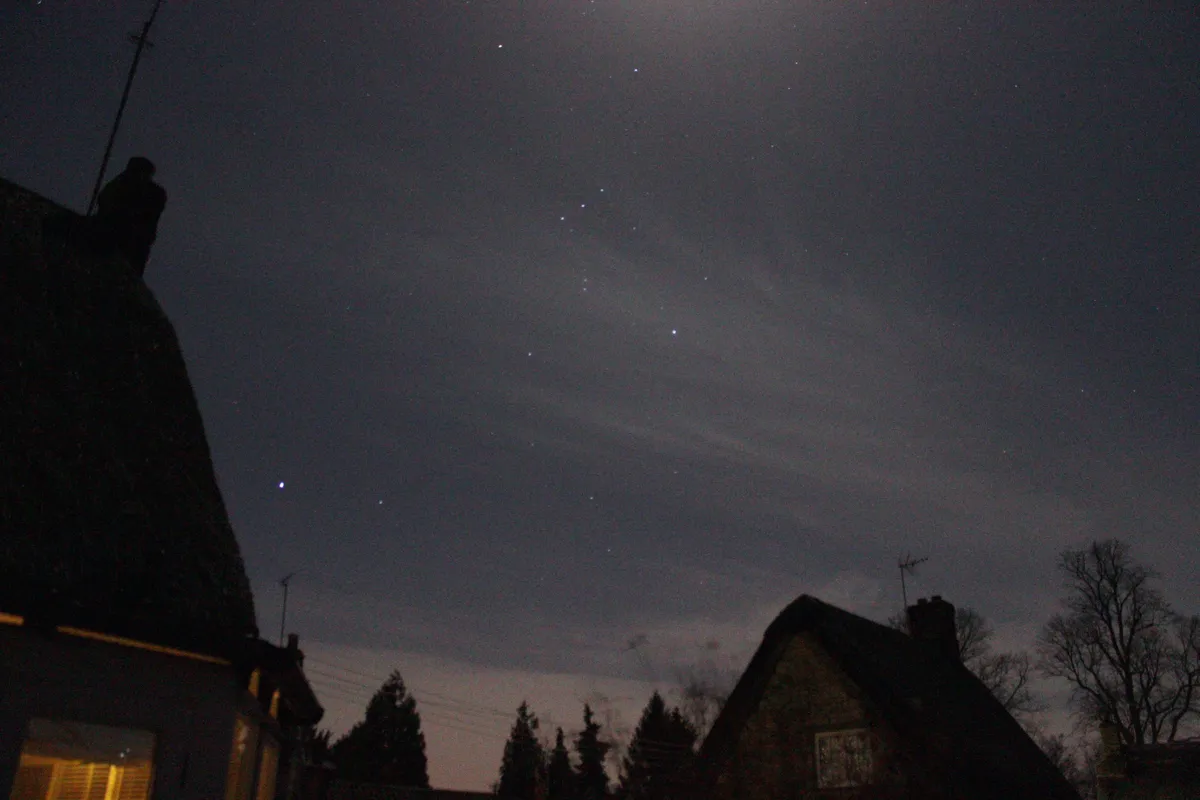
Betelgeuse (Alpha Orionis)
- RA: 05h 55m 10s
- Dec.: 07° 24’ 25”
We begin with the most famous star in Orion, mag. 0.5 Betelgeuse (Alpha (α) Orionis). An unmistakable bright orange star of spectral class M0, Betelgeuse is often cited as the most likely red supergiant to go supernova any time in the next million years.
Rigel (Beta Orionis)
- RA: 05h 14m 32s
- Dec.: –08° 12’ 06”
On the opposite side of the Belt stars to Betelgeuse is mag. 0.2 Rigel (Beta (β) Orionis). In contrast to Betelgeuse, Rigel is a brilliant blue-white star of spectral class B8. It is technically a little brighter than Betelgeuse despite being designated Beta.
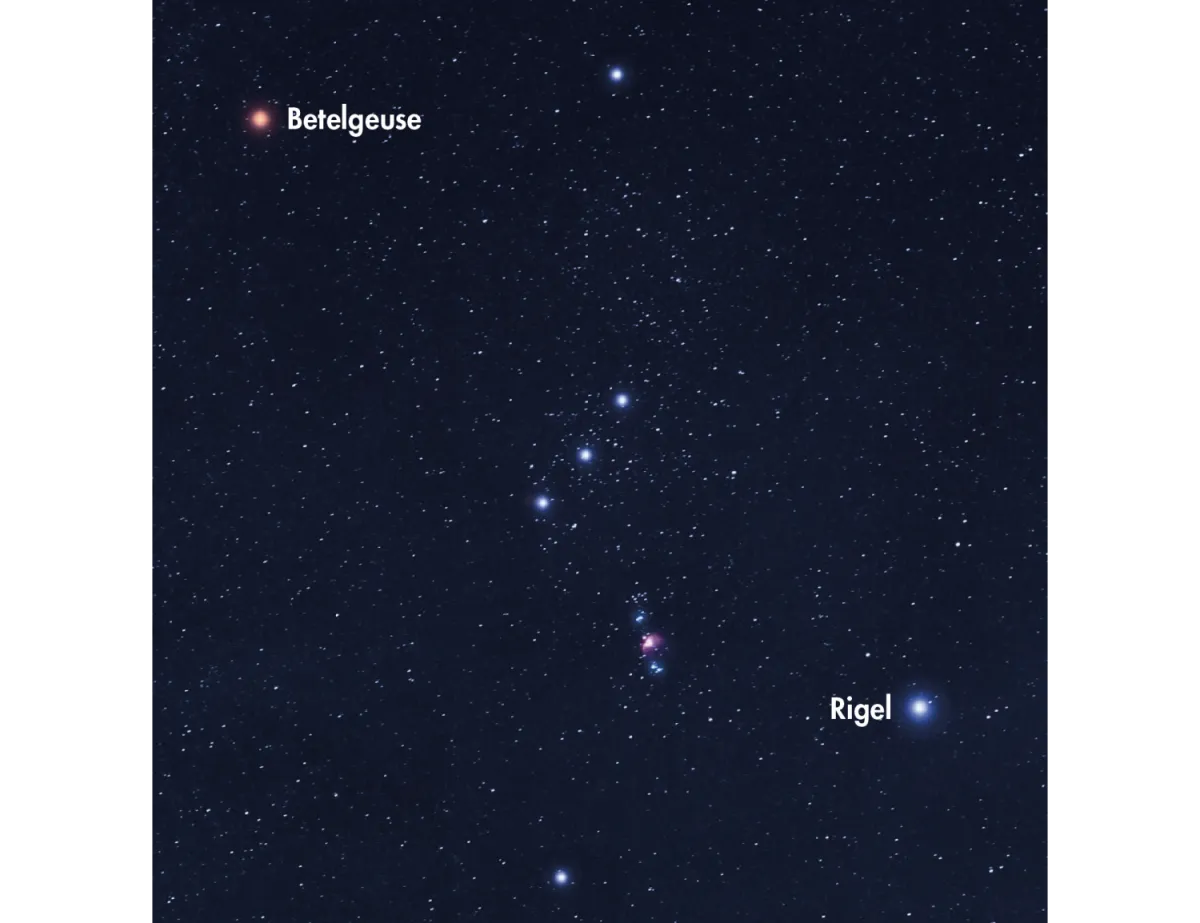
Targets to see in Orion with binoculars
Orion’s Belt
- RA: 05h 36m 12s (Alnilam)
- Dec.: –01° 12’ 07” (Alnilam)
With 10x50 binoculars you will see a little deeper. The 6° field of view allows a stunning view of the three stars that form Orion’s Belt: mag. 1.9 Alnitak (Zeta (ζ) Orionis), mag. 1.7 Alnilam (Epsilon (ε) Orionis) and mag. 2.4 Mintaka (Delta (δ) Orionis). All 3 are B0 spectral class.
Sword of Orion
- RA: 05h 35m 16s (Theta1 Orionis)
- Dec.: –05° 23’ 23” (Theta1 Orionis)
For now let’s sidestep the Orion Nebula, as the sword also contains the wonderful open cluster NGC 1981 at the top. A group of stars including mag. 4.6 42 Orionis and mag. 5.2 45 Orionis sits north of the Orion Nebula (M42) and the adjacent De Mairan’s Nebula (M43), which itself is above mag. 2.8 Hatsya (Iota (ι) Orionis).
Meissa (Lambda Orionis)
- RA: 05h 35m 8s
- Dec.: 09° 56’ 03”
Mag. 3.5 Meissa (Lambda (λ) Orionis) is found in a neglected group of stars known as Collinder 69 or the Lambda Orionis Association. Meissa makes a triangle with mag. 4.4 Pi1 (π¹) Orionis and mag 4.1 Pi2 (π2) Orionis. Meissa and the cluster it resides in are thought to be 1,100 lightyears away and certainly worth looking at with larger binoculars.
Orion’s Shield
- RA 04h 49m 50s (Tabit)
- Dec.: 06° 57’ 40” (Tabit)
Another neglected pattern is that of Orion’s Shield, formed by the 6 stars designated Pi Orionis (mag. 4.6 Pi1, mag. 4.4 Pi2, mag. 3.2 Pi3, mag. 3.7 Pi4, mag. 3.7 Pi5, and mag. 4.5 Pi6). They form a curved line best seen with low-power binoculars, such as a pair of 7x42s, as the distance between the two ends of the shield is 8.5º. Pi3 (π3) Orionis, also known as Tabit, is a relatively close 26 lightyears away.
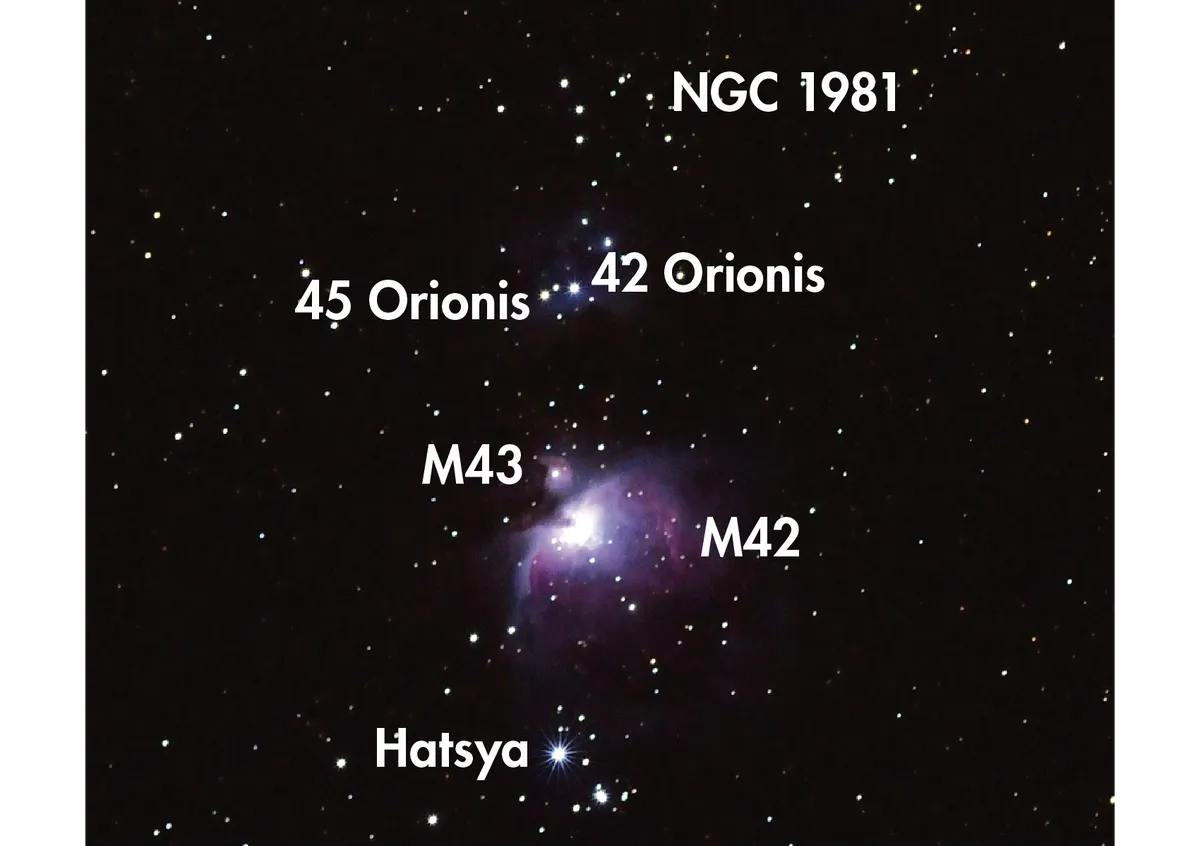
Targets to see in Orion with a small telescope
The Orion Nebula
- RA: 05h 35m 16s (Theta1 Orionis)
- Dec.: –05° 23’ 23” (Theta1 Orionis)
The Orion Nebula is the showpiece of the constellation and really comes alive with a small refractor. It has two patches with Messier designations: M42 is the main nebula, its wisps and tendrils stretching out from the central Trapezium Cluster. Just above it is the much smaller M43, also known as De Mairan’s Nebula.
M78
- RA: 05h 46m 45s
- Dec.: 00° 04’ 45”
M78 would be the showcase nebula of the constellation were it not for the Orion Nebula. It possesses two stars immersed in nebulosity, shines at mag. 8.0 and from Earth looks like a typical white-sheeted ghost. Look out for nearby NGC 2071: it is smaller than its neighbour but shines at mag. 8.0.
NGC 2112 and Barnard’s Loop
- RA: 05h 53m 45s (NGC 2112)
- Dec.: 00° 24’ 39” (NGC 2112)
The emission nebulosity described as Barnard’s Loop is well known among astrophotographers, yet part of its section above and slightly east of M78 can be traced with a 6-inch Dobsonian. This faint, ‘milky’ patch curves and ends close to mag. 9.0 open cluster NGC 2112. Low magnification is best for the loop.
Sigma Orionis
- RA: 05h 38m 44s
- Dec.: –02° 36’ 00”
Close to mag. 1.9 Alnitak (Zeta (ζ) Orionis) is mag. 4.0 Sigma (σ) Orionis, which appears as a stunning multiple star system through small to medium telescopes. There are four splittable stars, the brightest of which is another double – though this one is too tight to resolve in amateur instruments.
The Flame Nebula (NGC 2024)
- RA: 05h 41m 55s
- Dec.: –01° 51’ 00”
The Flame Nebula needs dark skies and low magnification to see well. Use a 6-inch reflector, making sure you keep nearby Alnitak out of the field of view to improve contrast, and you should be able to see its mottled fan shape. As a bonus, reflection nebula NGC 2023 lies nearby.

NGC 1662
- RA: 04h 48m 27s
- Dec.: –02° 56’ 38”
Now for something different. NGC 1662 is a lovely mag. 6.4 open cluster forming a right-angle triangle with mag. 4.6 Pi1 (π1) Orionis and mag. 4.4 Pi2 (π2) Orionis, the two stars at the top of Orion’s Shield. Pi1 Orionis sits in the right angle. This is another overlooked target, said to resemble a Klingon Bird of Prey from Star Trek.
NGC 2022
- RA: 05h 42m 6s
- Dec.: 09° 05’ 10”
This little planetary nebula can be found just southeast of mag. 3.5 Meissa (Lambda (λ) Orionis). The nebula shines at mag. 11.6. In a 6-inch Dobsonian it is small and round, appearing a pale greenish-blue. It can sustain high magnification if conditions permit.
The 37 Cluster
- RA: 06h 08m 24s
- Dec.: 13° 57’ 53”
Also designated NGC 2169, this cluster gets its name because its stars appear to form the numerals three and seven. A lovely little cluster shining at mag. 5.9 and well worth seeking out even under moderately light-polluted skies. This cluster bears higher magnifications well.
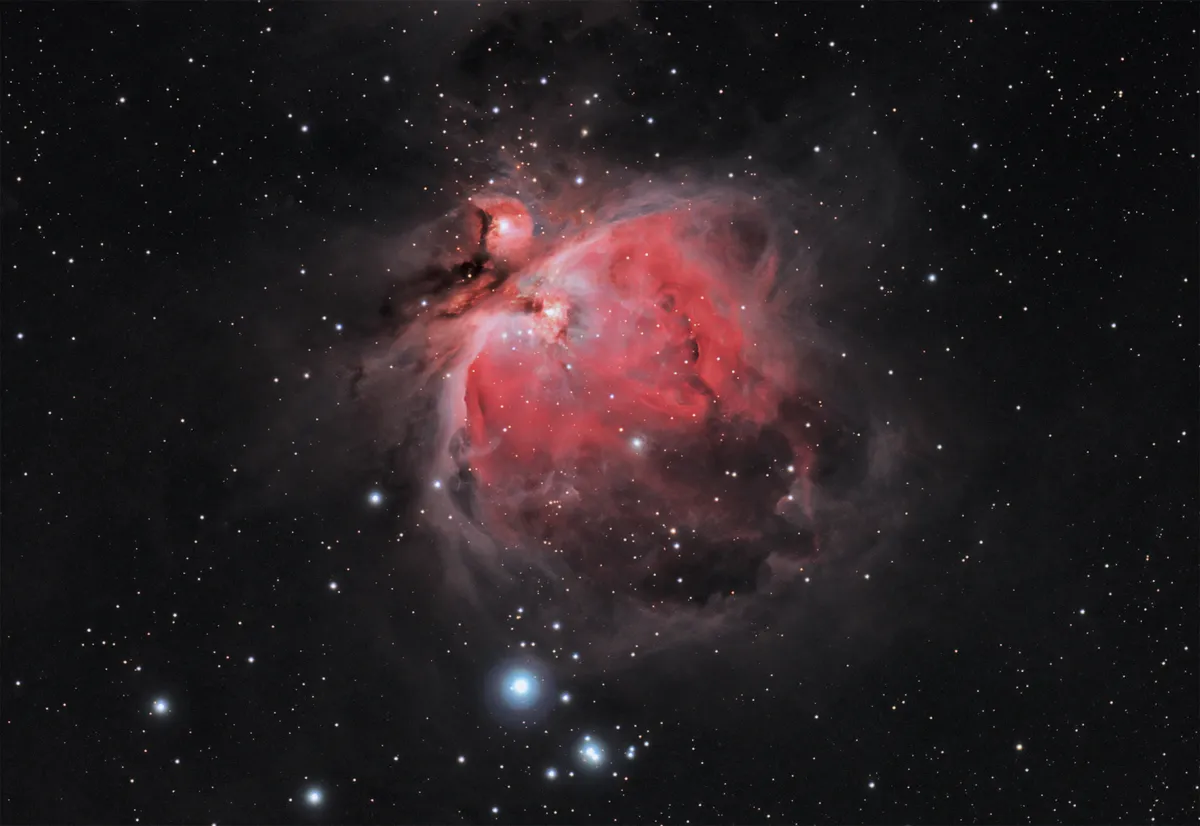
Targets to see in Orion with a large telescope
The Trapezium Cluster
- RA 05h 35m 16s (Theta1 Orionis)
- Dec.: –05° 23’ 23” (Theta1 Orionis)
At the heart of the Orion Nebula is the Trapezium Cluster. The main stars (A, B, C and D) can be easily seen through small scopes, but use a large instrument and two more pop easily into view: E and F. More challenging are stars G and H, which are mag. 16.0.
Jonckheere 320
- RA 05h 05m 40s
- Dec.: 10° 42’ 21”
This is a stunning but neglected planetary nebula shining at mag. 11.8. In smaller telescopes it looks like a green star at low magnification, so larger telescopes really do it justice and bring out its true nature. Through a 14-inch Newtonian it appears as a small green disc.
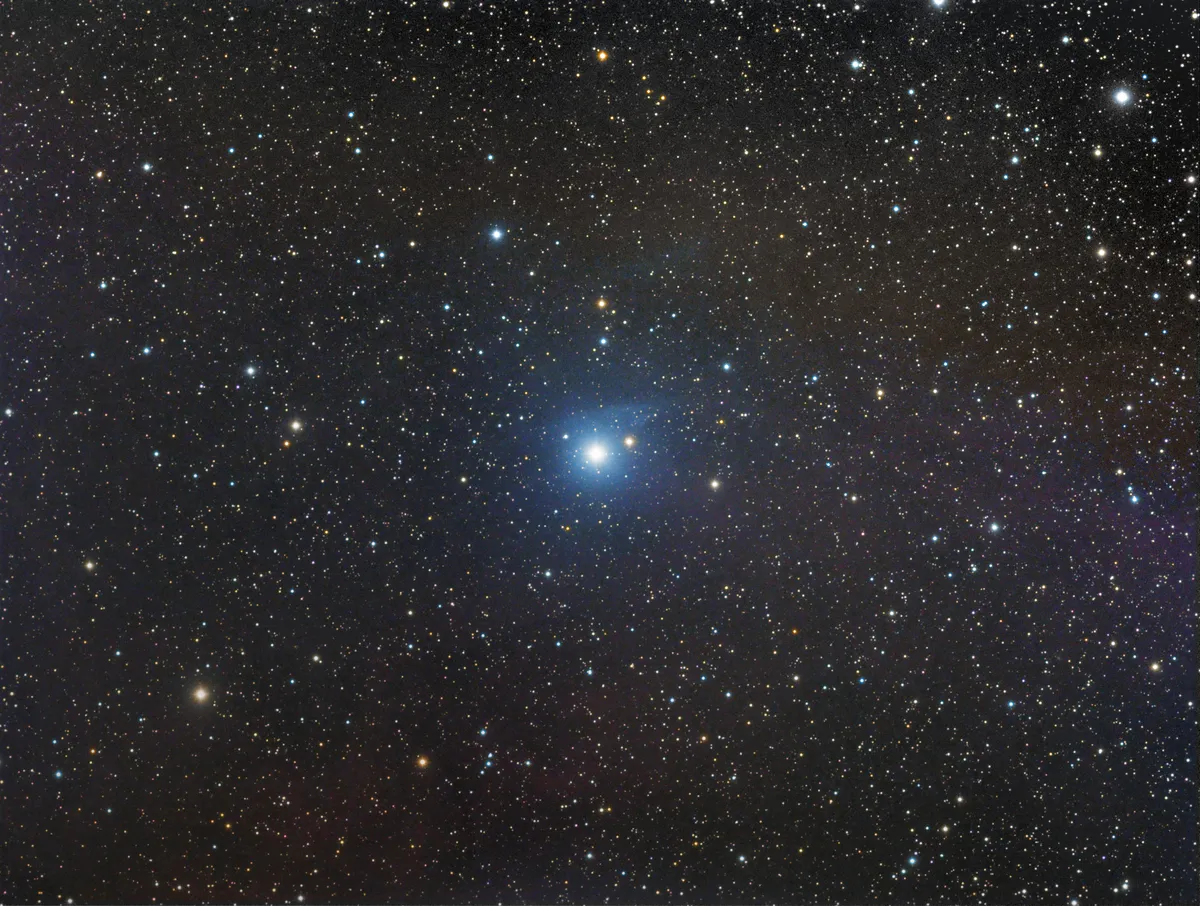
NGC 1999
- RA: 05h 36m 25s
- Dec.: –06° 42’ 58”
This is another nebula that could have more attention if it were not for the Orion Nebula. NGC 1999 shines at mag. 9.5 and in small telescopes looks like a small misty star, but a 14-inch scope reveals the mag. 10.3 star V380 Orionis surrounded by faint nebulosity.
NGC 1788
- RA: 05h 06m 54s
- Dec.: -03° 20’ 05”
Off the beaten track and roughly north of mag. 2.8 Cursa (Beta (β) Eridani), NGC 1788 is a reflection nebula that deserves to be better known. It glows by reflecting the light of the mag. 10.0 star embedded within it, and using a large scope reveals more stars around it.
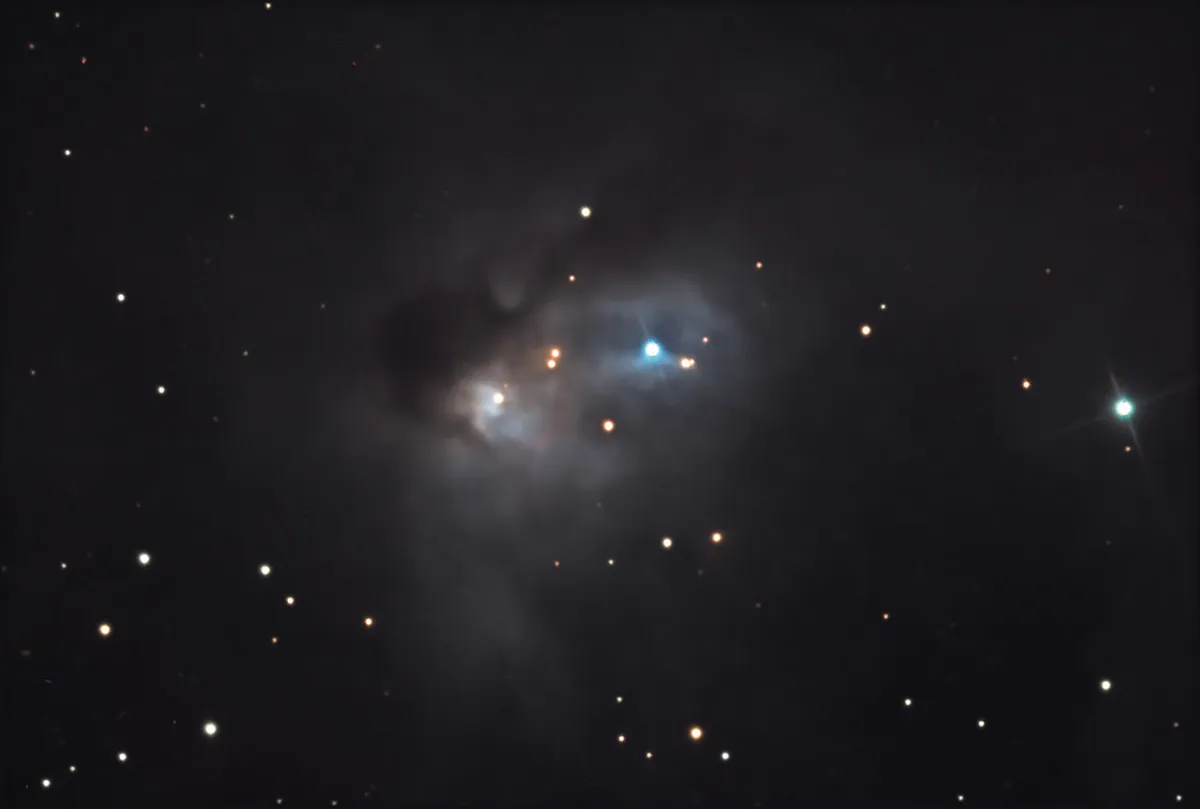
NGC 1924
- RA: 05h 28m 02s
- Dec.: –05° 18’ 39”
Orion is home to dozens of galaxies. One of the easier ones to find is NGC 1924, which lies to the west of M42, shines at mag. 13.3 and may be as far as 100 million lightyears away. When viewed through a 14-inch Newtonian at 200x magnification it appears as a pale, oval smudge of light.
IC 421
- RA: 05h 32m 08s
- Dec.: –07° 55’ 06”
This barred face-on spiral galaxy has a stated magnitude range of mag. 14.2 to mag. 16.4 and is a challenging object. See if you can detect it with a 14-inch Newtonian at 200x magnification as a faint roundish smudge of light. It lies 140 million lightyears away.
UGC 3188
- RA: 04h 51m 49s
- Dec.: –08° 50’ 38”
Use mag. 4.4 Pi2 (π2) Orionis to home in on this faint galaxy, which rests just 18 arcminutes east of the star and shines at mag. 15.0. This galaxy has a couple of mag. 10.0 stars nearby that help you locate it. Just south of Pi2 Orionis is UGC 3180, another mag. 15.0 galaxy, this time all alone in the night sky.
The Horsehead Nebula (Barnard 33)
- RA 05h 41m 01s
- Dec.: –02° 27’ 14”
To see the famous Horsehead Nebula, you have to be able to pick up faint emission nebula IC 434, which hangs south from mag 1.9 Alnitak (Zeta (ζ) Orionis). The horse’s head appears as a dark notch through a 14-inch Newtonian and requires averted vision – a great, subtle challenge.]

Take a deep-sky tour of Orion's Head
There's plenty to see around the head of the hunter with a medium or large telescope. See if you can tick all 6 of our deep-sky objects off the list.
To help you find the objects on our tour, download our PDF chart of deep-sky objects around Orion's Head.
Collinder 69
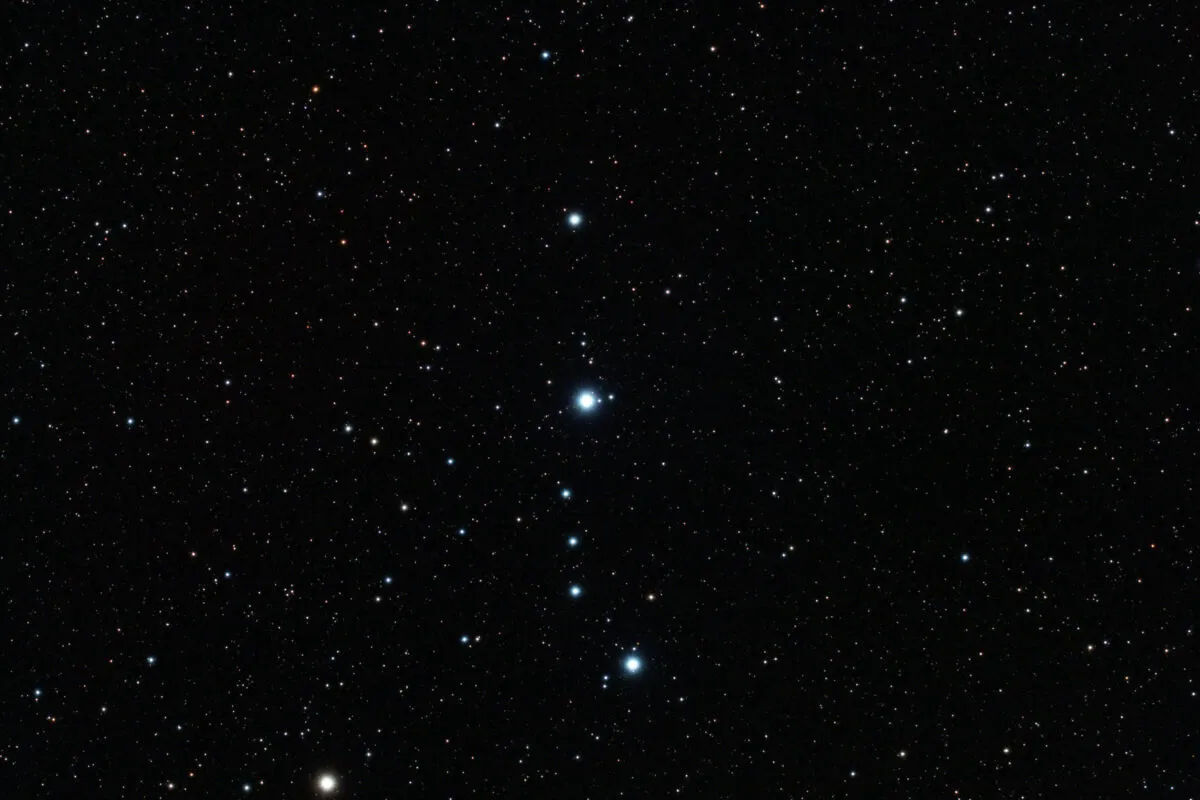
Orion’s head is marked by mag. 3.4 Meissa (Lambda (λ) Orionis). This marks the northern vertex of a small naked-eye triangle, together with mag. 4.4 Phi1 (φ1) Orionis and mag. 4.1 Phi2 (φ2) Orionis. A small scope at low power shows numerous fainter stars in the region, many belonging to cluster Collinder 69. Look out for the attractive line of seventh magnitude stars running south of Meissa.
Telescopes over 250mm may detect faint nebulosity around the cluster. This is Sharpless 2-264, an object made easier to see with an Oxygen (OIII) filter. It occupies a roughly circular area 6.5˚ across, centred on Meissa and has low surface brightness, with the brightest part west of Meissa. Long exposure images reveal the Angel Fish Nebula; a pink emission nebula that resembles a sideways-on fish.
NGC 2022

Our next object appears within the boundary of Sharpless 2-264, 1.9˚ east-southeast of Meissa. Here lies the brightest planetary nebula in Orion, NGC 2022, which isn’t saying much as it shines with an integrated magnitude of 12.4!
It has an apparent diameter of 20 arcseconds, with small scopes revealing a star-like object at low magnification. Upping the power won’t show detail, but should reveal the elliptical shape of this planetary.
Larger instruments show a grey ellipse with a darker region in the centre that creates the appearance of a ring. The central star has a mag. 14.9 and requires at least 400mm of aperture to see properly.
Abell 12
The Abell catalogue of planetary nebulae lists 86 objects, many of which are faint and require large scopes. Abell 12 adds to the challenge as it’s located near Mu (∝) Orionis. Mu shines at mag. 4.1 while the integrated magnitude of Abell 12 is 13.9, over 8,000 times dimmer than the star.
Abell 12 is around 0.5 arcminutes from Mu and falls within its visual glare, making the planetary difficult to see, even with a large instrument. Nicknamed the ‘hidden planetary’, the trick is to employ a large aperture and an OIII filter.
NGC 2141
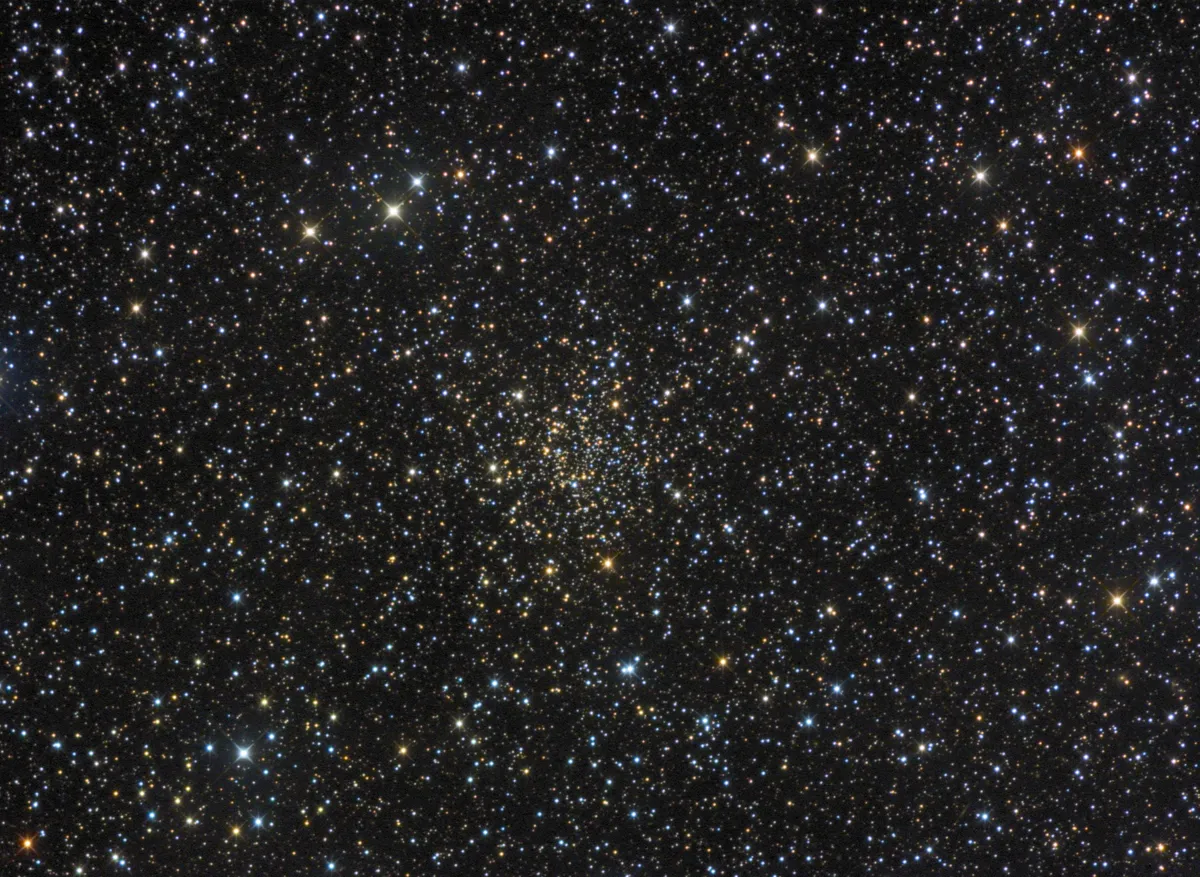
Open cluster NGC 2141 sits 0.8˚ north and a bit east of Mu Orionis. When the term ‘open cluster’ is mentioned, the mind’s eye image is of a group of stars in the eyepiece. However, not all are bright enough to show such a view and NGC 2141 falls into this category. Despite being listed at mag. 9.4, smaller instruments are unable to resolve any of the cluster’s stars; you will see a mistiness behind a number of brighter foreground stars. You need a 300mm aperture to show the 20 individually resolved stars.
NGC 2194
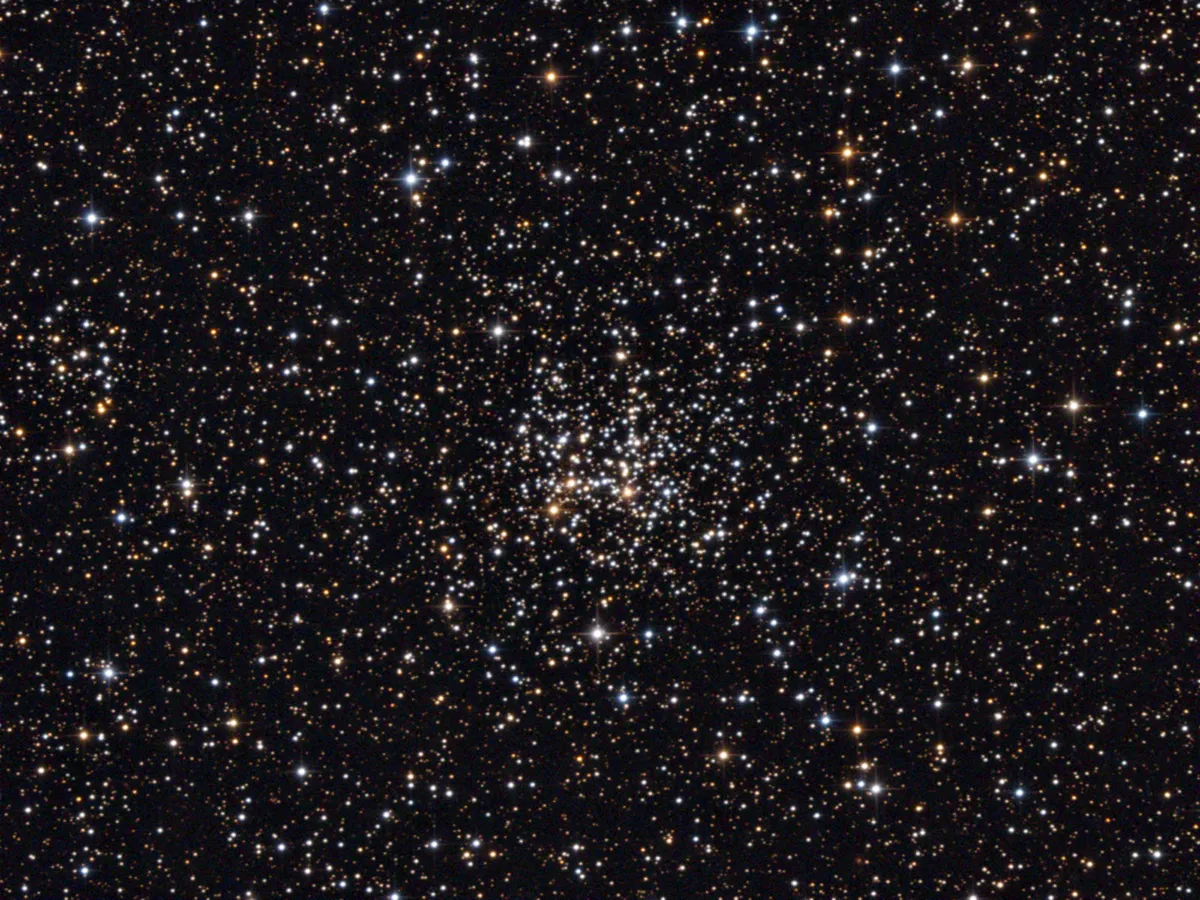
Located 3.5˚ northwest of NGC 2141 and half a degree northwest of the mag. 5.4 star 73 Orionis, is the open cluster NGC 2194. This has a similar size to our previous target, but is slightly brighter with a listed integrated magnitude of 8.5.
A 150mm scope shows a misty glow sprinkled with six or so individual stars. A 250mm scope doubles the number of individual stars seen and reveals a granular texture to the mistiness, while a 300mm scope allows you to drill down into the cluster’s core where several tens of stars can be individually resolved.
NGC 2169
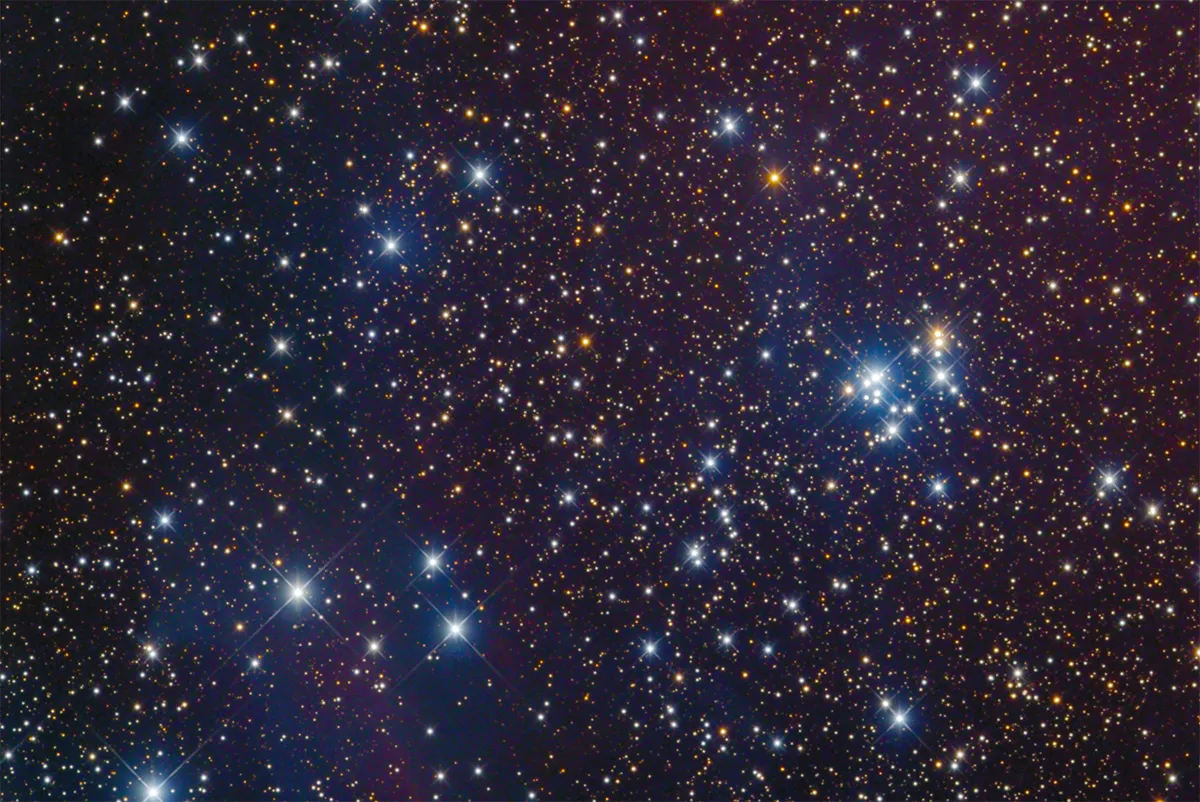
The stars in our final object appear to form the number ‘37’ or perhaps less attractively, a shopping trolley! Listed at mag. 5.9, a small scope will show NGC 2169, containing 16 stars in a 5 arcsecond area. The count increases to around 20 cluster members through a 300mm telescope.
Look for the contrast in colour between most of the stars and the two which mark the join between the vertical and horizontal components of the ‘7’. This pair is double star Struve 844 and looks orange compared to the white and blue-white colour of the others. The brightest star in the top of the ‘3’ is double star Struve 848, with mag. 6.9 and 7.8 components separated by 2.6 arcseconds.
Photographs of the Orion constellation
Below is a selection of images of the Orion constellation captured by BBC Sky at Night Magazine readers and astrophotographers.
Have you captured an image of Orion? Don't forget to send us your images or share them with us via Facebook, Twitter and Instagram.
This article originally appeared in the December 2016 issue of BBC Sky at Night Magazine.
